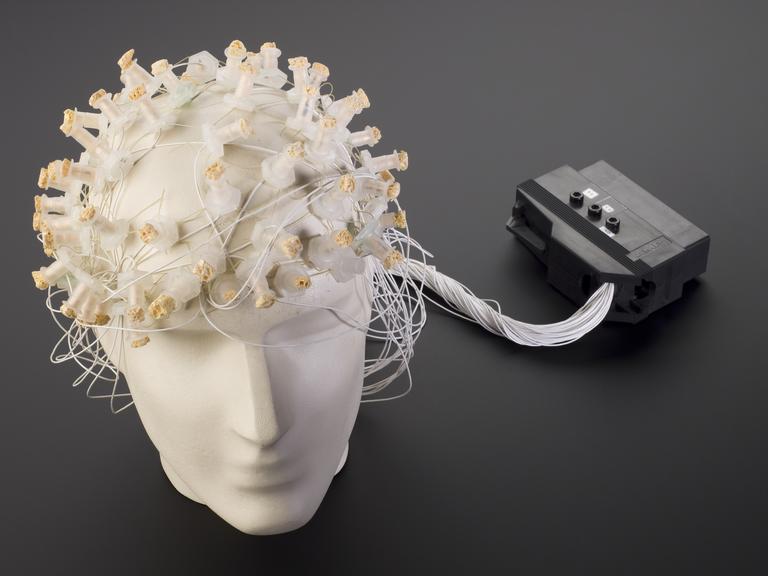
Curved Sensor Net used to record electrical signals of the brain, Europe, 1990-1998
- Made:
- 1988-1990 in United States
- maker:
- Electrical Geodesics, Inc.








Geodesic brain impulse sensor net, by Electrical Geodesics Incorporated, United States, 1988-90. Plastic sensors with sponge and silver chloride electrodes on copper wire, for EEG recordings, particularly of young children. Used at the Cognitive Development Unit, University College London, 1990-1998.
Sixty-four electrodes form this geodesic sensor net, which picks up weak electrical signals from the brain. This net was used at the Cognitive Development Unit at University College London to investigate how young babies recognise faces. Recordings of the electrical signals of the brain are known as electroencephalograms (EEGs).
Details
- Category:
- Psychology, Psychiatry & Anthropometry
- Object Number:
- 1999-1012
- Materials:
- plastic (unidentified), sponge, silver chloride, steel (metal) and electronic components
- Measurements:
-
overall: 140 mm x 390 mm x 320 mm, .525kg
- type:
- geodesic sensor net
- credit:
- Birkbeck College, Centre for Brain and Cognitive Development




